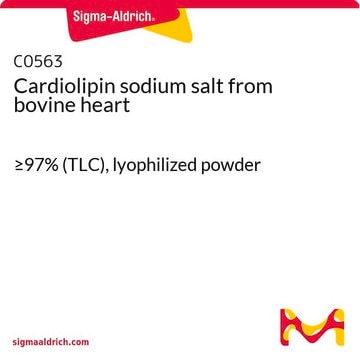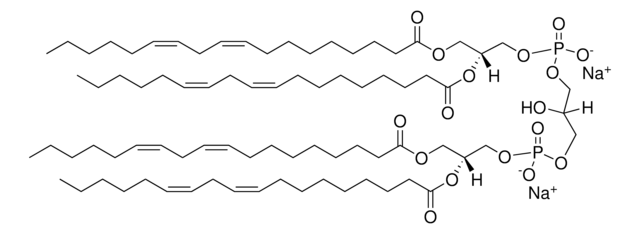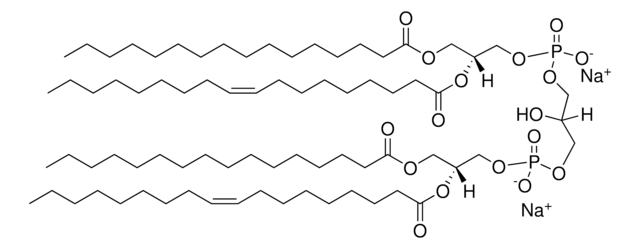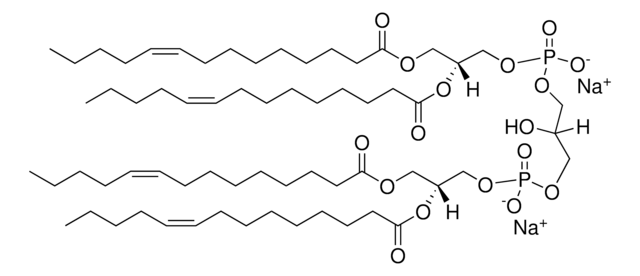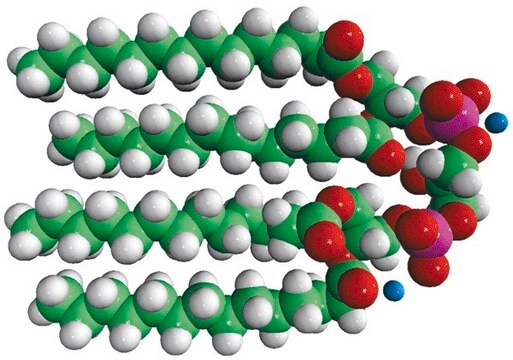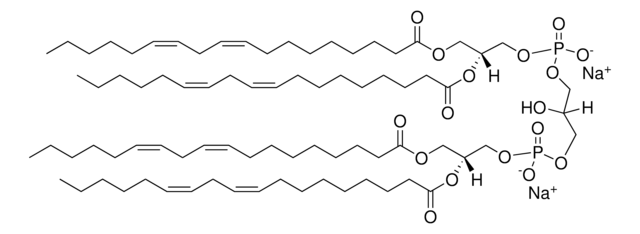750332C
Avanti
14:0 Cardiolipin (sodium salt)
1′,3′-bis[1,2-dimyristoyl-sn-glycero-3-phospho]-glycerol (sodium salt), chloroform
Sinónimos:
1,1′,2,2′-tetratetradecanoyl cardiolipin (sodium salt); CL(1′-[14:0/14:0],3′-[14:0/14:0])
Seleccione un Tamaño
Seleccione un Tamaño
About This Item
Productos recomendados
Ensayo
>99% (TLC)
Formulario
solution
envase
pkg of 1 × 2.5 mL (750332C-25mg)
pkg of 2 × 4 mL (750332C-200mg)
fabricante / nombre comercial
Avanti Research™ - A Croda Brand 750332C
concentración
10 mg/mL (750332C-25mg)
25 mg/mL (750332C-200mg)
tipo de lípido
phospholipids
cardiolipins
Condiciones de envío
dry ice
temp. de almacenamiento
−20°C
Descripción general
Aplicación
Envase
Información legal
Palabra de señalización
Danger
Frases de peligro
Consejos de prudencia
Clasificaciones de peligro
Acute Tox. 3 Inhalation - Acute Tox. 4 Oral - Aquatic Chronic 3 - Carc. 2 - Eye Irrit. 2 - Repr. 2 - Skin Irrit. 2 - STOT RE 1 - STOT SE 3
Órganos de actuación
Central nervous system, Liver,Kidney
Clase de riesgo para el agua (WGK)
WGK 3
Elija entre una de las versiones más recientes:
Certificados de análisis (COA)
It looks like we've run into a problem, but you can still download Certificates of Analysis from our Documentos section.
Si necesita más asistencia, póngase en contacto con Atención al cliente
¿Ya tiene este producto?
Encuentre la documentación para los productos que ha comprado recientemente en la Biblioteca de documentos.
Los clientes también vieron
Nuestro equipo de científicos tiene experiencia en todas las áreas de investigación: Ciencias de la vida, Ciencia de los materiales, Síntesis química, Cromatografía, Analítica y muchas otras.
Póngase en contacto con el Servicio técnico